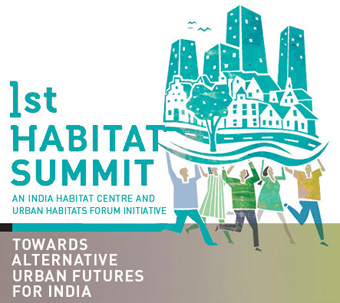#{Title}
#{Copy}
As part of the lead up to establishing a permanent studio in India BDP took part in, and co-sponsored, the 1st Habitat Summit in Delhi entitled Alternative Urban Futures for India.
Every day in India, more than 1,650 people migrate from rural areas to cities. The effects of this extreme process of urbanisation are everywhere to be seen from the vast shanty towns to makeshift shelters which have sprung up on every available piece of spare land to the chaos and noise of a transport system which seems to have been taken to breaking point and beyond. India is a country of great contrasts and whilst these things are all part of its magic, they also pose tremendous challenges, especially for town planners and architects.
It was in this context that India’s inaugural Urban Habitat Summit was held, at the renowned Joseph Allen Stein designed India Habitat Centre, in Delhi from 24-26 September 2009.
As a sponsor BDP was able to help influence the form of the conference during early discussions with the organisers, largely shaped by BDP urban designer Manisha Gupta, and subsequently contributed to a number of sessions at the event.
The summit focused on the joint subjects of urbanisation and sustainability and about how to bring the two together. It addressed many of the issues relating to how modern-day India will develop looking from an internal perspective and also in a worldwide context. Topics covered included economics, sustainability, education, social inclusion, affordability of housing and the practical issues of how change can be achieved.
It was attended by over 2000 delegates, including government ministers and professionals from many fields and all parts of the world with a large contingent of students and undergraduates.
While the conference took the traditional form of keynote addresses - many given by prominent central government figures - followed by panel discussions, the youth-dominated event created a more than usually lively and dynamic atmosphere.
BDP’s Chief Executive Peter Drummond and two of his fellow directors Shyam Khandekar, managing director of BDP India, and Andrew Tindsley, urban design director, contributed respectively to discussions on: -
David Cash, international development director, who made up the complement BDP delegates said, “BDP enjoyed a very high profile at this event and it was an excellent way of announcing our planned new venture in India.”
Andrew Tindsley commented “the summit had very high aspirations and explored weighty issues; we learned a lot but also enjoyed ourselves.”
